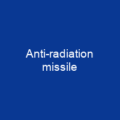Missiles: The Art of Airborne Warfare
Imagine a world where projectiles are no longer just stones or arrows but sophisticated machines capable of self-propelled flight. That’s the essence of what we call missiles today. But have you ever wondered how these marvels of modern warfare came to be? Let’s dive into the history and mechanics behind them.
The Evolution of Missiles
Historically, a missile was any projectile thrown or propelled towards a target. However, with time, it evolved into something much more complex. The first modern missiles were developed in the early 20th century by American Robert Goddard and German Hermann Oberth. These pioneers laid the groundwork for what we now know as rockets and guided missiles.
Missile Components: A Symphony of Parts
A typical missile system has five key components: targeting, guidance system, flight system, engine, and warhead. Each part plays a crucial role in ensuring that the missile reaches its intended target with precision. Think of it as an orchestra where each instrument must play its part perfectly for the symphony to work.
Guidance Systems: The Brain Behind the Missile
The guidance system is like the brain of the missile, using INS (Inertial Navigation System) or satellite guidance to track the missile’s position relative to the target. Imagine a missile as a ship navigating through uncharted waters; it needs a reliable compass and map to reach its destination.
Propulsion: The Power Behind Flight
Missiles are powered by propellants igniting to produce thrust, with solid-propellant rockets being easier to maintain and deploy faster. Liquid-propellant rockets provide more propulsion but require more complex handling. Jet engines are commonly used in cruise missiles, while turbojets, turbofans, and ramjets also have their roles.
Warheads: The Final Blow
The warhead of a missile provides its primary destructive power, often employing high explosives or shaped charges to exploit the accuracy of a guided weapon. Think of it as the bullet in a gun; without it, the missile would just be a fancy flying machine.
Missile Classification: A World of Diversity
Missiles are classified into categories by type, launch platform and target, range, propulsion, and guidance system. Strategic missiles are long-range weapons used to target beyond the immediate vicinity, mostly designed to carry nuclear warheads. Tactical missiles include surface-to-air, surface-to-surface, air-to-air, air-to-surface, anti-ship, and anti-tank types.
Ballistic Missiles: The Arching Trajectory
Ballistic missiles can be categorized based on range as short-range, medium-range, intermediate-range, and intercontinental. They are powered by rockets during launch and follow a trajectory that arches upwards before descending to reach their intended target.
Anti-Ship and Anti-Tank Missiles: Precision Strikes
Anti-ship missiles use a combination of inertial guidance and active radar homing, while anti-tank guided missiles hit heavily armored military vehicles with laser guiding, television camera, or wire-guiding systems. These are like the sniper rifles in warfare, providing precision strikes from afar.
Air-to-Air Missiles: The Sky’s the Limit
Air-to-air missiles destroy opposing aircraft using radar or heat emission based homing systems. They are like the fighter jets of the missile world, designed to engage and eliminate threats in the air.
Surface-to-Surface Missiles: Ground Targets
Surface-to-surface missiles strike targets on land from the ground or sea. These are the artillery pieces of modern warfare, capable of delivering devastating blows to enemy positions.
Anti-Satellite Weapons: The Space Race
Anti-satellite weapons incapacitate or destroy satellites. Although no ASAT system has yet been utilized in warfare, a few countries have successfully shot down their own satellites to demonstrate their ASAT capabilities in a show of force. These are like the stealth bombers of space, designed to disrupt an adversary’s technological superiority.
Missiles, with their complex systems and diverse applications, represent a fascinating blend of technology and strategy. From the early days of rocket propulsion to today’s sophisticated guided missiles, they continue to evolve, shaping the future of warfare in ways we can only imagine.

You want to know more about Missile?
This page is based on the article Missile published in Wikipedia (retrieved on December 27, 2024) and was automatically summarized using artificial intelligence.





